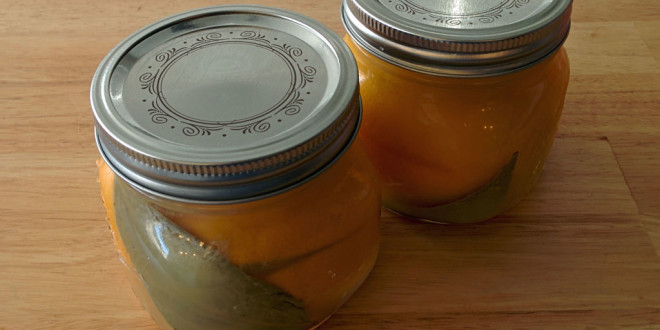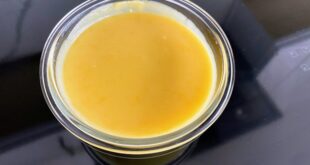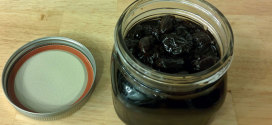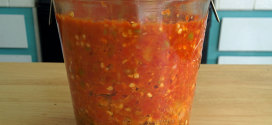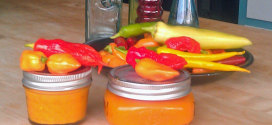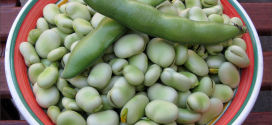If you have a Meyer lemon tree and it is January, you are looking at dozens of ripe lemons. You have made lemonade. You have made lemon ice-cubes. What else can you do with them besides play bocce ball with them? Preserve them! They add a great flavor to chicken tagine.
Reprinted by epicurious.com with permission from Couscous and Other Good Food From Morocco by Paula Wolfert, © 1973
Preserved lemons, sold loose in the souks, are one of the indispensable ingredients of Moroccan cooking, used in fragrant lamb and vegetable tagines, recipes for chicken with lemons and olives, and salads. Their unique pickled taste and special silken texture cannot be duplicated with fresh lemon or lime juice, despite what some food writers have said. In Morocco they are made with a mixture of fragrant-skinned doqq and tart boussera lemons, but I have had excellent luck with American lemons from Florida and California.
Moroccan Jews have a slightly different procedure for pickling, which involves the use of olive oil, but this recipe, which includes optional herbs (in the manner of Safi), will produce a true Moroccan preserved-lemon taste.
The important thing in preserving lemons is to be certain they are completely covered with salted lemon juice. With my recipe you can use the lemon juice over and over again. (As a matter of fact, I keep a jar of used pickling juice in the kitchen, and when I make Bloody Marys or salad dressings and have half a lemon left over, I toss it into the jar and let it marinate with the rest.) Use wooden utensils to remove the lemons as needed.
Sometimes you will see a sort of lacy, white substance clinging to preserved lemons in their jar; it is perfectly harmless, but should be rinsed off for aesthetic reasons just before the lemons are used. Preserved lemons are rinsed, in any case, to rid them of their salty taste. Cook with both pulps and rinds, if desired.
ingredients
5 lemons (Meyer lemons if you have them)
1/4 cup salt, more if desired
Optional Safi mixture:
1 cinnamon stick
3 cloves
5 to 6 coriander seeds
3 to 4 black peppercorns
1 bay leaf
Freshly squeezed lemon juice, if necessary
EQUIPMENT:
Shallow bowl
Sterile 1-pint mason jar
Sharp knife
preparation
1. If you wish to soften the peel, soak the lemons in lukewarm water for 3 days, changing the water daily.
2. Quarter the lemons from the top to within 1/2 inch of the bottom, sprinkle salt on the exposed flesh, then reshape the fruit.
3. Place 1 tablespoon salt on the bottom of the mason jar. Pack in the lemons and push them down, adding more salt, and the optional spices between layers. Press the lemons down to release their juices and to make room for the remaining lemons. (If the juice released from the squashed fruit does not cover them, add freshly squeezed lemon juice — not chemically produced lemon juice and not water.*) Leave some air space before sealing the jar.
4. Let the lemons ripen in a warm place, shaking the jar each day to distribute the salt and juice. Let ripen for 30 days. To use, rinse the lemons, as needed, under running water, removing and discarding the pulp, if desired — and there is no need to refrigerate after opening. Preserved lemons will keep up to a year, and the pickling juice can be used two or three times over the course of a year.
* According to the late Michael Field, the best way to extract the maximum amount of juice from a lemon is to boil it in water for 2 or 3 minutes and allow it to cool before squeezing.
Paula Wolfert shares her tips with Epicurious:
•Located on Morocco’s Atlantic coast, south of Casablanca and north of Essaouira, the city of Safi is known for its seafood specialties.
•To most closely approximate the flavor of Moroccan lemons, Wolfert recommends Meyer lemons for this recipe. This lemon/mandarin orange hybrid, in season in January and February, has yellow-orange flesh, a smooth rind, and a sweeter flavor than other lemons.
•To sterilize a mason jar for the lemons, place it upside down in a steamer and steam for 10 minutes. Using tongs (wrap the ends in rubber bands for a better grip), remove the hot jar and dry it upside down on a paper towel-lined baking sheet in a warm oven. To sterilize the jar’s top, boil it in water for 5 minutes, then remove with tongs. For more information on home canning, click here.
•When you’re ready to use a lemon, remove it with clean utensils to avoid contaminating the inside of the jar with bacteria. This way, the remaining contents of the jar will not need to be refrigerated.
